-
 Bitcoin
Bitcoin $88,171.9943
0.77% -
 Ethereum
Ethereum $1,583.5013
-3.79% -
 Tether USDt
Tether USDt $0.9999
-0.01% -
 XRP
XRP $2.0788
-2.36% -
 BNB
BNB $601.6429
-0.53% -
 Solana
Solana $139.2326
-1.03% -
 USDC
USDC $1.0000
0.00% -
 Dogecoin
Dogecoin $0.1619
-0.06% -
 TRON
TRON $0.2477
1.31% -
 Cardano
Cardano $0.6267
-2.59% -
 Chainlink
Chainlink $13.0581
-3.75% -
 UNUS SED LEO
UNUS SED LEO $9.1913
-2.40% -
 Avalanche
Avalanche $19.6951
-3.57% -
 Stellar
Stellar $0.2445
-4.58% -
 Toncoin
Toncoin $2.9298
-3.54% -
 Sui
Sui $2.2407
-0.77% -
 Hedera
Hedera $0.1722
-0.30% -
 Shiba Inu
Shiba Inu $0.0...01233
-2.57% -
 Bitcoin Cash
Bitcoin Cash $337.4706
-0.29% -
 Hyperliquid
Hyperliquid $18.2488
-0.06% -
 Litecoin
Litecoin $78.5693
-1.21% -
 Polkadot
Polkadot $3.7036
-5.93% -
 Dai
Dai $1.0000
-0.01% -
 Bitget Token
Bitget Token $4.4181
-1.29% -
 Ethena USDe
Ethena USDe $0.9992
-0.01% -
 Pi
Pi $0.6291
-1.32% -
 Monero
Monero $216.0820
0.38% -
 Pepe
Pepe $0.0...07910
0.59% -
 Uniswap
Uniswap $5.2401
-3.83% -
 OKB
OKB $50.7369
-0.42%
What is the future development trend of NFT?
NFTs are evolving beyond speculation, focusing on utility in gaming, metaverse experiences, and digital identity, while tackling scalability, security, and environmental concerns through interoperability, standardization, and sustainable blockchain solutions.
Feb 28, 2025 at 08:18 am
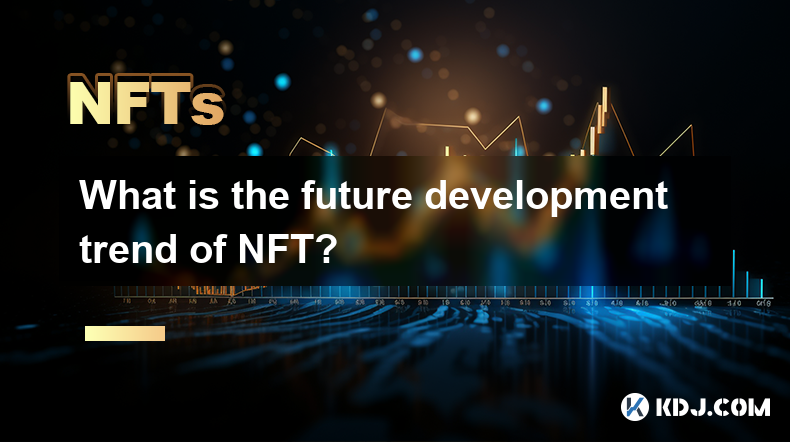
What is the Future Development Trend of NFT?
Key Points:
- Increased Utility Beyond Speculation: NFTs are moving beyond simple digital art collectibles towards functional integration within various ecosystems. This includes gaming, metaverse experiences, digital identity, and fractional ownership of real-world assets.
- Interoperability and Standardization: The NFT landscape is fragmented. Future development will likely see increased interoperability between different blockchains and NFT marketplaces, along with the development of standardized formats and metadata to enhance discoverability and usability.
- Enhanced Security and Scalability: Current NFT marketplaces and blockchain networks face scalability challenges and security vulnerabilities. Improvements in these areas, including layer-2 scaling solutions and advancements in blockchain technology, are crucial for mainstream adoption.
- Integration with Web3 and the Metaverse: NFTs are intrinsically linked to the growth of Web3 and the metaverse. Future trends will see deeper integration, creating immersive and interactive experiences that leverage NFT ownership for access and customization.
- Regulatory Clarity and Legal Frameworks: The legal landscape surrounding NFTs remains uncertain. Clearer regulatory frameworks are essential for fostering trust, protecting investors, and enabling wider adoption.
- Focus on Sustainability and Environmental Impact: The environmental impact of NFT minting on energy-intensive blockchains is a major concern. The future will likely see a shift towards more environmentally friendly blockchain solutions and minting processes.
- Expansion into New Industries and Use Cases: The potential applications of NFTs extend far beyond digital art. We can anticipate further exploration of use cases in supply chain management, ticketing, digital identity verification, and intellectual property rights management.
- Increased Utility Beyond Speculation:
The initial hype surrounding NFTs largely centered on their speculative value, with many viewing them as purely collectible digital assets. However, the future of NFTs lies in their utility and integration into real-world applications. This shift is already underway, with NFTs finding increasing use in various sectors.
Imagine a gaming world where in-game assets, from unique characters to powerful weapons, are represented by NFTs. This allows players true ownership of their in-game items, enabling them to trade, sell, or even rent them to other players. This creates a thriving in-game economy and fosters a sense of community and engagement that traditional gaming models struggle to match. Beyond gaming, NFTs can unlock new possibilities in the metaverse. Imagine owning a virtual plot of land in a metaverse, represented by an NFT, which you can develop, customize, and rent out to others. This could generate real-world income and provide a sense of digital ownership that goes beyond mere participation.
Furthermore, NFTs are being explored as a means to represent and manage digital identities. Instead of relying on centralized platforms to manage your online identity, an NFT could serve as a secure and portable representation of your digital self, carrying your credentials, achievements, and other personal information. This could streamline various online processes and enhance security. Finally, fractional ownership of real-world assets, such as real estate or fine art, is becoming increasingly possible through NFTs. This allows investors to participate in assets that were previously inaccessible due to high entry costs, democratizing access to lucrative investment opportunities. This opens up new avenues for investment and portfolio diversification. The potential for utility-driven NFTs is vast, driving future development and mainstream adoption. The shift from speculative assets to functional tools is key to unlocking the true potential of this technology.
- Interoperability and Standardization:
Currently, the NFT landscape is characterized by fragmentation. Different blockchains host their own NFT marketplaces, each with its own standards and protocols. This lack of interoperability creates significant hurdles for both creators and users. Imagine a scenario where an NFT created on one blockchain cannot be easily traded or used on another. This limits the potential market for the NFT and makes it difficult for creators to reach a wider audience. The future of NFTs hinges on increased interoperability between different platforms and networks. This would require the development of standardized formats and metadata, allowing NFTs to seamlessly move between different blockchains and marketplaces. This would enhance discoverability and make NFTs more accessible to a broader range of users.
Standardization is also crucial for improving the user experience. Imagine a world where all NFTs adhere to a common standard, allowing users to easily understand their properties, provenance, and associated rights. This would reduce confusion and enhance trust among users. Achieving interoperability and standardization requires collaboration between different stakeholders in the NFT ecosystem, including blockchain developers, NFT marketplaces, and regulatory bodies. This collaboration is crucial for creating a more unified and user-friendly NFT ecosystem. Increased interoperability and standardization would lead to a more vibrant and dynamic NFT market, attracting new users and creators. The development of cross-chain compatibility protocols and standardized metadata schemas is critical for realizing this vision.
- Enhanced Security and Scalability:
Current NFT marketplaces and blockchain networks often face challenges related to scalability and security. The high transaction fees and slow transaction speeds on some blockchains can hinder widespread adoption. Similarly, security vulnerabilities can expose NFTs to theft or fraud. The future development of NFTs will require significant improvements in both scalability and security. Layer-2 scaling solutions, such as rollups and sidechains, offer promising pathways to address scalability issues. These solutions allow for the processing of transactions off the main blockchain, significantly increasing throughput and reducing transaction fees.
Advancements in blockchain technology are also crucial for improving security. The development of more robust consensus mechanisms and cryptographic techniques can enhance the security of NFTs and protect them from various attacks. The implementation of robust KYC/AML procedures and enhanced fraud detection mechanisms on NFT marketplaces is equally important. Improved security and scalability will enhance user trust and encourage wider participation in the NFT ecosystem. The development of more efficient and secure blockchain technologies is essential for realizing the full potential of NFTs. This involves continuous research and development in areas such as consensus algorithms, cryptography, and network architecture.
- Integration with Web3 and the Metaverse:
NFTs are intrinsically linked to the development of Web3 and the metaverse. Web3, the decentralized successor to the current internet, relies heavily on blockchain technology and decentralized applications (dApps). NFTs, being native to blockchain, play a crucial role in establishing ownership and authenticity within Web3. The metaverse, a collective virtual shared space, also relies heavily on NFTs for representing digital assets, virtual land ownership, and unique identities.
The future will see deeper integration between NFTs, Web3, and the metaverse. NFTs will serve as the building blocks for immersive and interactive experiences within virtual worlds. Imagine a metaverse where you own your avatar, represented by an NFT, and can customize its appearance, skills, and possessions using other NFTs. This would create a personalized and engaging experience that goes beyond traditional gaming or virtual worlds. The integration of NFTs with Web3 technologies, such as decentralized storage and decentralized identity systems, will also be crucial. This will enhance security, privacy, and user control within the metaverse. The combination of NFTs, Web3, and the metaverse has the potential to create entirely new forms of entertainment, social interaction, and economic activity. This convergence is a major driver of future development in the NFT space.
- Regulatory Clarity and Legal Frameworks:
The legal landscape surrounding NFTs remains uncertain. The lack of clear regulatory frameworks creates challenges for both creators and users. Issues surrounding intellectual property rights, taxation, and consumer protection remain unresolved in many jurisdictions. The future of NFTs requires clearer regulatory frameworks that provide legal certainty and protect investors. This includes the development of specific laws and regulations that address the unique aspects of NFTs, such as their digital nature and decentralized ownership.
Regulatory clarity is essential for fostering trust and promoting wider adoption of NFTs. Clear guidelines on intellectual property rights are necessary to protect creators from infringement and ensure that they receive appropriate compensation for their work. Similarly, clear tax regulations are necessary to prevent tax evasion and ensure that governments receive appropriate revenue from NFT transactions. The development of consumer protection measures is also crucial to prevent fraud and scams, which can damage the reputation of the NFT ecosystem. International cooperation is essential to establish consistent regulatory frameworks across different jurisdictions. This would prevent regulatory arbitrage and ensure a level playing field for all participants in the NFT market. Regulatory clarity is a crucial step in ensuring the long-term sustainability and growth of the NFT ecosystem.
- Focus on Sustainability and Environmental Impact:
The energy consumption associated with the minting of NFTs on some blockchains, particularly proof-of-work blockchains like Bitcoin and Ethereum (prior to the Merge), has raised significant environmental concerns. The high energy consumption contributes to carbon emissions and raises questions about the sustainability of the NFT ecosystem. The future of NFTs requires a greater focus on sustainability and reducing the environmental impact of NFT minting. This can be achieved through several approaches. The shift towards more environmentally friendly blockchain solutions, such as those employing proof-of-stake consensus mechanisms, is crucial. Proof-of-stake consumes significantly less energy than proof-of-work.
Furthermore, the development of carbon offsetting mechanisms can help to mitigate the environmental impact of NFT minting. This involves investing in projects that reduce carbon emissions to compensate for the emissions generated by NFT minting. The adoption of energy-efficient minting techniques and the use of renewable energy sources for powering blockchain networks are also important steps. Increased transparency and accountability in reporting the energy consumption of NFT minting are also crucial. This allows users to make informed choices about which NFTs to purchase and supports the development of more sustainable practices within the industry. A focus on sustainability is essential for ensuring the long-term acceptance and growth of the NFT ecosystem.
- Expansion into New Industries and Use Cases:
The potential applications of NFTs extend far beyond digital art. While digital art remains a prominent use case, NFTs are finding applications in a wide range of industries and sectors. The future will see an expansion of NFTs into new industries and use cases, unlocking further potential. In supply chain management, NFTs can be used to track the provenance of goods, ensuring authenticity and preventing counterfeiting. This enhances transparency and trust throughout the supply chain. In the ticketing industry, NFTs can provide tamper-proof tickets that cannot be easily forged or resold illegally. This improves security and reduces fraud. In digital identity verification, NFTs can represent digital identities, providing a secure and verifiable means of proving one's identity online. This has applications in various sectors, such as finance and healthcare.
Furthermore, NFTs are being explored for managing intellectual property rights. NFTs can represent ownership of intellectual property, making it easier to track ownership, licensing, and royalties. This simplifies the management of intellectual property and reduces disputes. In the real estate sector, NFTs are being used to represent fractional ownership of properties, making investment more accessible. The expansion into these new industries and use cases will further drive the adoption and development of NFTs. The exploration of new applications will continue to unlock the vast potential of this technology, leading to further innovation and growth.
FAQs:
Q: What are the biggest challenges facing the future of NFTs?
A: The biggest challenges include ensuring scalability and security of blockchain networks, addressing environmental concerns related to energy consumption, establishing clear regulatory frameworks, and fostering greater interoperability between different platforms and blockchains. Overcoming these challenges is crucial for mainstream adoption.
Q: Will NFTs become more mainstream in the future?
A: The potential for mainstream adoption is high, particularly as NFTs move beyond speculative assets towards functional integration within various ecosystems. However, the success of this transition depends on overcoming the challenges mentioned above, including scalability, security, regulatory clarity, and environmental sustainability.
Q: What are some promising use cases for NFTs beyond digital art?
A: Promising use cases include applications in gaming, the metaverse, supply chain management, ticketing, digital identity verification, intellectual property rights management, and fractional ownership of real-world assets. These diverse applications demonstrate the broad potential of NFT technology.
Q: How can the environmental impact of NFTs be reduced?
A: Reducing the environmental impact requires a shift towards more energy-efficient blockchain solutions (like proof-of-stake), the development of carbon offsetting mechanisms, and the adoption of renewable energy sources for powering blockchain networks. Increased transparency and accountability in reporting energy consumption are also crucial.
Q: What role will regulation play in the future of NFTs?
A: Clear and consistent regulatory frameworks are essential for fostering trust, protecting investors, and promoting wider adoption. Regulations should address issues such as intellectual property rights, taxation, and consumer protection, ensuring a level playing field and preventing fraud.
Disclaimer:info@kdj.com
The information provided is not trading advice. kdj.com does not assume any responsibility for any investments made based on the information provided in this article. Cryptocurrencies are highly volatile and it is highly recommended that you invest with caution after thorough research!
If you believe that the content used on this website infringes your copyright, please contact us immediately (info@kdj.com) and we will delete it promptly.
- What if the next internet sensation isn't a viral video or dance challenge—but a meme coin?
- 2025-04-22 14:40:12
- Gold Hits New All-Time High Near $3,500
- 2025-04-22 14:40:12
- Crypto law firm Burwick Law has called out Solana-based non-fungible token platform Metaplex's plan to sweep unclaimed Solana (SOL) into its treasury
- 2025-04-22 14:35:11
- Bybit Details Movement Of Hacked Assets in Staggering $1.5B Crypto Heist
- 2025-04-22 14:35:11
- 2 Main Reasons Why Kaspa (KAS) Price Is Pumping
- 2025-04-22 14:30:12
- Coinbase Launches CFTC-Approved XRP Futures Contracts Through Its Derivatives Arm
- 2025-04-22 14:30:12
Related knowledge

How to display and trade NFTs from NFT airdrops?
Apr 18,2025 at 04:42am
How to Display and Trade NFTs from NFT Airdrops? NFT airdrops have become a popular way for projects to distribute their tokens and engage with their community. If you've received NFTs through an airdrop, you might be wondering how to display and trade them. This article will guide you through the process step-by-step, ensuring you can showcase your NFT...
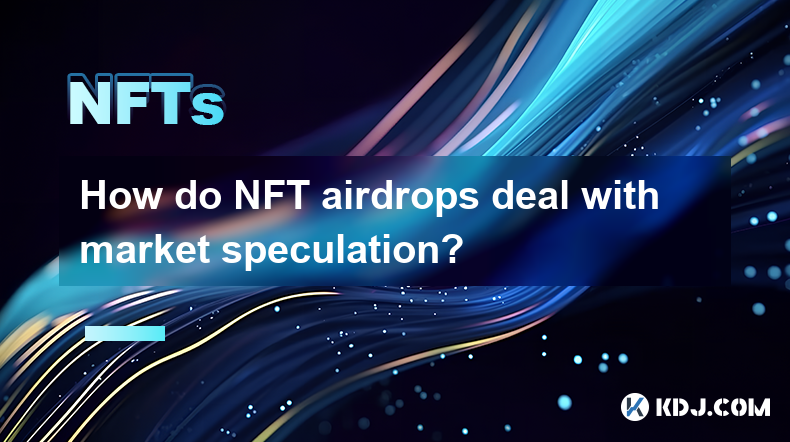
How do NFT airdrops deal with market speculation?
Apr 20,2025 at 10:28pm
NFT airdrops have become a significant phenomenon in the cryptocurrency space, often used as a marketing tool to distribute tokens or digital assets to a wide audience. However, they also introduce elements of market speculation that can impact the value and perception of NFTs. This article explores how NFT airdrops deal with market speculation, delving...
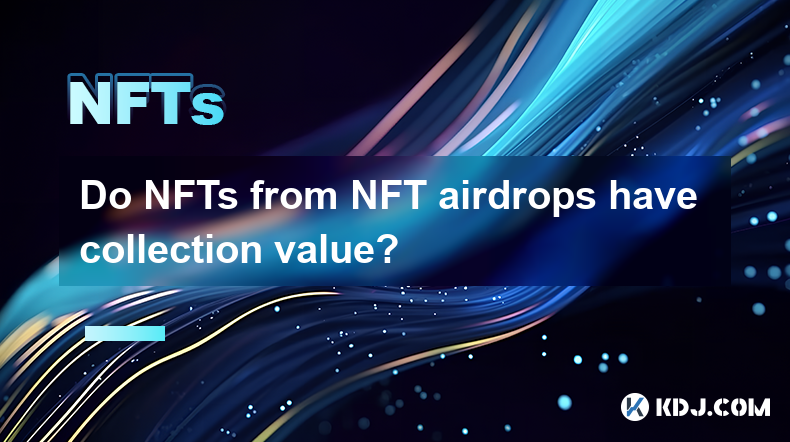
Do NFTs from NFT airdrops have collection value?
Apr 18,2025 at 11:49pm
NFTs, or non-fungible tokens, have become a significant part of the cryptocurrency ecosystem, and NFT airdrops are one way for projects to distribute these digital assets to their community. A common question that arises is whether NFTs received from airdrops have any collection value. To answer this question, we need to delve into various aspects of NF...
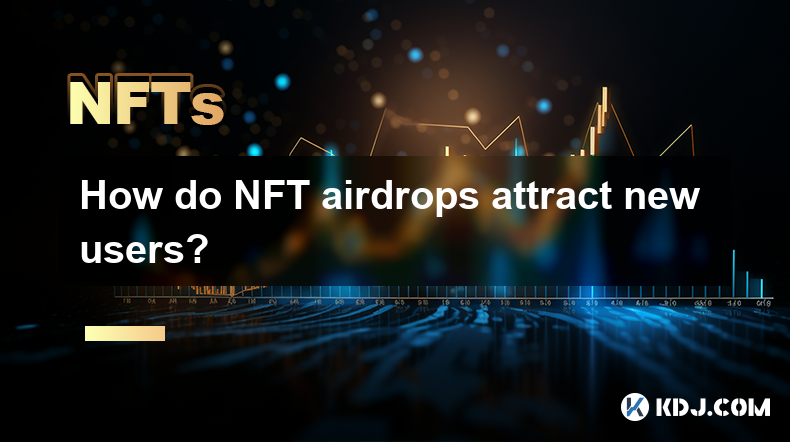
How do NFT airdrops attract new users?
Apr 21,2025 at 07:21am
NFT airdrops have become a popular strategy within the cryptocurrency community to attract new users and engage existing ones. By distributing free NFTs to a targeted audience, projects can create buzz, increase visibility, and foster a sense of community. This method leverages the allure of free digital assets to draw in participants who might not have...
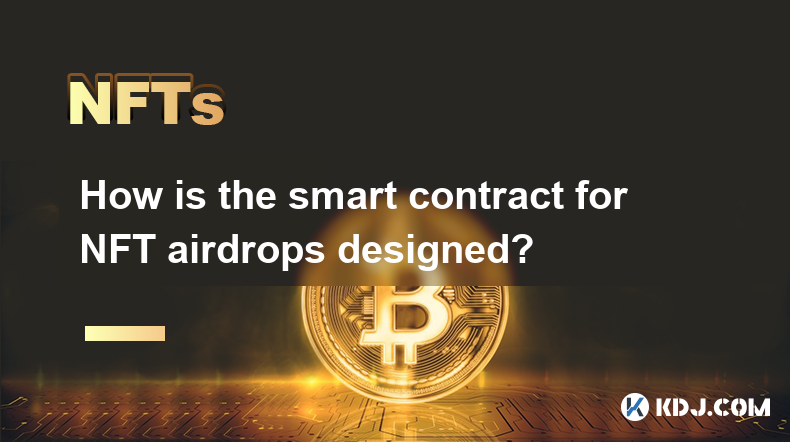
How is the smart contract for NFT airdrops designed?
Apr 18,2025 at 03:10am
The design of a smart contract for NFT airdrops is a complex process that requires careful consideration of various factors to ensure the airdrop is executed smoothly and securely. This article will delve into the intricacies of how such a smart contract is designed, focusing on key components, security measures, and the implementation process. Key Comp...

Will NFT airdrops affect the market value of NFT?
Apr 22,2025 at 06:56am
The impact of NFT airdrops on the market value of NFTs is a topic of significant interest within the cryptocurrency and digital asset community. NFT airdrops, where creators or platforms distribute free NFTs to a targeted group of recipients, can have various effects on the market value of NFTs. This article delves into the different ways NFT airdrops c...

How to display and trade NFTs from NFT airdrops?
Apr 18,2025 at 04:42am
How to Display and Trade NFTs from NFT Airdrops? NFT airdrops have become a popular way for projects to distribute their tokens and engage with their community. If you've received NFTs through an airdrop, you might be wondering how to display and trade them. This article will guide you through the process step-by-step, ensuring you can showcase your NFT...

How do NFT airdrops deal with market speculation?
Apr 20,2025 at 10:28pm
NFT airdrops have become a significant phenomenon in the cryptocurrency space, often used as a marketing tool to distribute tokens or digital assets to a wide audience. However, they also introduce elements of market speculation that can impact the value and perception of NFTs. This article explores how NFT airdrops deal with market speculation, delving...

Do NFTs from NFT airdrops have collection value?
Apr 18,2025 at 11:49pm
NFTs, or non-fungible tokens, have become a significant part of the cryptocurrency ecosystem, and NFT airdrops are one way for projects to distribute these digital assets to their community. A common question that arises is whether NFTs received from airdrops have any collection value. To answer this question, we need to delve into various aspects of NF...

How do NFT airdrops attract new users?
Apr 21,2025 at 07:21am
NFT airdrops have become a popular strategy within the cryptocurrency community to attract new users and engage existing ones. By distributing free NFTs to a targeted audience, projects can create buzz, increase visibility, and foster a sense of community. This method leverages the allure of free digital assets to draw in participants who might not have...

How is the smart contract for NFT airdrops designed?
Apr 18,2025 at 03:10am
The design of a smart contract for NFT airdrops is a complex process that requires careful consideration of various factors to ensure the airdrop is executed smoothly and securely. This article will delve into the intricacies of how such a smart contract is designed, focusing on key components, security measures, and the implementation process. Key Comp...

Will NFT airdrops affect the market value of NFT?
Apr 22,2025 at 06:56am
The impact of NFT airdrops on the market value of NFTs is a topic of significant interest within the cryptocurrency and digital asset community. NFT airdrops, where creators or platforms distribute free NFTs to a targeted group of recipients, can have various effects on the market value of NFTs. This article delves into the different ways NFT airdrops c...
See all articles























































































